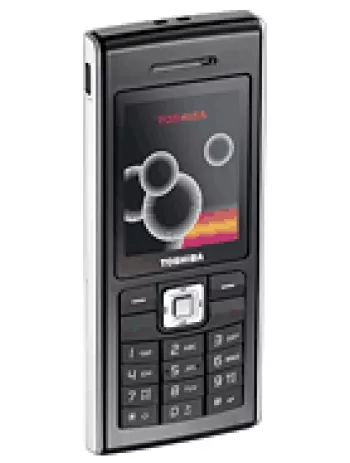
Overview
The Toshiba Thrive 7, released in December 2011, is a compact and versatile tablet designed to rival other 7-inch devices on the market at the time. With its robust build and functionality powered by Nvidia's Tegra 2 dual-core processor, it aimed to provide a reliable and efficient user experience. It runs on Android Honeycomb 3.2, making it a viable option for those seeking a multimedia tablet with decent processing power.
Design and Build
The Toshiba Thrive 7 boasts dimensions of 189 x 128.1 x 11.9 mm and a weight of 400 g, which makes it moderately portable while maintaining a solid feel in hand. The tablet's black color gives it a professional appearance. Although thicker than some competitors, the thickness provides a comfortable grip and room for connection ports, which is often sacrificed in slimmer tablets.
Display
Equipped with a 7.0 inch LED-backlit LCD, the Thrive 7 offers a resolution of 1280 x 800 pixels. This results in a pixel density of approximately 216 ppi, delivering crisp and clear visuals suitable for watching videos, browsing, and reading. The screen's size and resolution make it an ideal choice for users who desire a balance between image quality and easy handling.
Performance
Under the hood, the Toshiba Thrive 7 is powered by an Nvidia Tegra 2 T20 chipset, featuring a Dual-core 1.0 GHz Cortex-A9 CPU and a ULP GeForce GPU. This combination ensures smooth operation for everyday tasks and casual gaming. It features 1GB of RAM, which is decent for its time, allowing for multitasking without significant lag.
Storage
The tablet comes with two internal storage options: 16GB and 32GB. This can be expanded further via the dedicated microSDHC card slot, which is a valuable feature for users with large media libraries or extensive app collections. The ability to increase storage adds to the tablet's longevity, accommodating future storage needs.
Camera
The Toshiba Thrive 7 includes a 5MP rear camera with autofocus and an LED flash, capable of shooting 720p video. While modest by today's standards, it provides adequate performance for capturing day-to-day moments and video chatting. The 2MP front camera, though basic, supports video calls and selfies.
Audio
The Thrive 7 features stereo speakers and a 3.5mm audio jack, providing flexibility for audio output. Whether you’re using headphones or listening through the device’s speakers, the audio quality is satisfactory for personal entertainment and casual usage.
Connectivity
Connectivity options include Wi-Fi 802.11 b/g/n for internet access and Bluetooth 2.1 with A2DP for pairing with other devices. The presence of GPS and A-GPS enhances its utility for navigation purposes, though it lacks cellular connectivity and a radio. It has a miniUSB 2.0 port for data transfer and charging, adding to its versatility.
Sensors and Additional Features
The Thrive 7 integrates sensors such as an accelerometer, gyro, and compass, which enhance its functionality in various applications, including games and navigation apps. These sensors add layers of interaction, making the tablet adaptable for multiple uses.
Battery Life
The tablet is powered by a non-removable Li-Ion battery with a capacity of 15 Wh, providing up to 6 hours of talk time. This battery life, while not exceptional, is average for tablets in its category and release period, sufficient for moderate usage throughout the day.
Price and Availability
Upon release, the Toshiba Thrive 7 was priced at approximately 250 EUR, placing it in the affordable range for tablets with its set of features. However, it has since been discontinued, meaning it is no longer available through primary retail channels. It remains accessible through secondary markets for those interested in this particular model.
Conclusion
Toshiba's Thrive 7 was a competent device in its time, offering solid performance and functionality in a 7-inch form factor. Its sturdy build, coupled with expandable storage and a satisfactory display, made it a versatile choice for users looking for a balance of work and play. Although no longer in production, the Thrive 7 stands as a testament to Toshiba's contribution to early tablet innovations.
Key Features of Toshiba Thrive 7
- 7.0-inch LED-backlit LCD display with a resolution of 1280 x 800 pixels.
- Nvidia Tegra 2 T20 chipset with a dual-core 1.0 GHz Cortex-A9 CPU.
- ULP GeForce GPU for enhanced graphics performance.
- 16GB or 32GB internal storage options with 1GB RAM and microSDHC card slot for expandable storage.
- 5 MP rear camera with autofocus and LED flash for clear photos and 720p video recording.
- 2 MP front camera for selfies and video calls.
- Stereo speakers with a 3.5mm audio jack for superior sound quality.
- Wi-Fi 802.11 b/g/n and Bluetooth 2.1 for connectivity.
- GPS and A-GPS support for navigation.
- Accelerometer, gyro, and compass sensors for enhanced user interaction.
- Non-removable Li-Ion battery with up to 6 hours of talk time.
- Compact design with dimensions of 189 x 128.1 x 11.9 mm and a weight of 400 g.
Drawbacks of Toshiba Thrive 7
- No cellular connectivity - limited to Wi-Fi use only.
- Discontinued status - no longer supported or available for purchase.
- Bulky design - weighs 400 g and has a thickness of 11.9 mm.
- Older Android OS - runs on Android 3.2 (Honeycomb) which is outdated.
- No SIM card slot - unable to use mobile network data.
- Limited internal storage options with only 16GB and 32GB versions.
- Poor camera performance with only 5 MP main and 2 MP front cameras.
- No radio support - lacks FM/AM capabilities.
- Bluetooth 2.1 - outdated version, which limits connectivity and features.
- Short battery life - only up to 6 hours of talk time.

View Also
More Phones
All Rights Reserved +13665 Phones © Mobilawy 2025

























